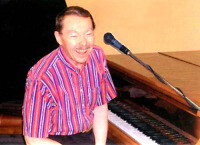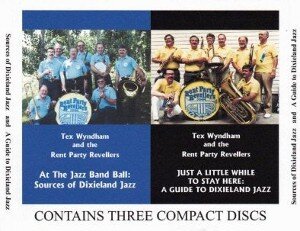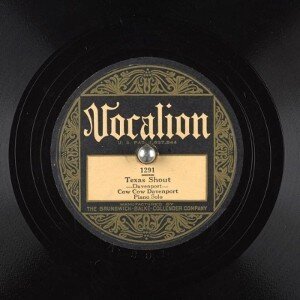 Set forth below is the seventieth “Texas Shout” column. It first appeared in the March 1996 issue of The American Rag. The text has not been updated. However, for reasons that will become clear, I wrote a followup to it for publication in mid-1997 as an addendum to another column, entitled “This Month’s Records,” which I was then also writing for TAR. I have included that material below as a lead-in to this reprint.
Set forth below is the seventieth “Texas Shout” column. It first appeared in the March 1996 issue of The American Rag. The text has not been updated. However, for reasons that will become clear, I wrote a followup to it for publication in mid-1997 as an addendum to another column, entitled “This Month’s Records,” which I was then also writing for TAR. I have included that material below as a lead-in to this reprint.
I’d like to use this space to restate some points made in the March 1996 edition of “Texas Shout.” That article offered certain comments on soloists who construct their solos in a melodic and tuneful way and on those who do not.
I included in the text thereof a portion of a previously published letter that touched on that topic. I did so because I thought I could save myself some work by using something I already had on hand.
In retrospect, I see that I should have written the whole piece from scratch. My letter was designed to accomplish a different purpose. I didn’t do a good enough job of writing the new material in a way that melded it seamlessly with the terminology used in the letter.
As a result, some of my readers came away with an imperfect grasp of what I was trying to say. So, I’m going to take another crack at setting forth in clearer terms those parts of the column that caused confusion. It may help if you think of a Dixieland solo as a form of speech, speech expressed in music. A person’s normal speech is made up of groups of words, called sentences, separated by pauses. A soloist’s “speech,” the solo, is made up of groups of notes, called phrases, also separated by pauses (often the spots at which horn players take breaths).
A spoken sentence may be any length. The same is true of a musical phrase.
Although it is possible for a phrase to last a full chorus or even longer, a typical soloist’s phrases are usually much shorter. A Dixieland phrase is commonly two or four measures long.
For reasons explained clearly enough in my original March 1996 column, a Dixieland solo must make frequent contact with, or reference to, the notes in the underlying chord pattern. Said another way, the solo must, first and foremost, adhere as a whole to the tune’s basic harmonic structure. Otherwise, all or parts of it will sound “wrong.”
Within that overall mandate, each phrase played by a soloist will fall into one of three categories:
(1) It repeats, or is a fairly obvious paraphrase of, the tune’s melody as written by its composer.
(2) It does not use the composer’s melody, but is a phrase that by itself is tuneful, melodic and singable – something hummable or something to which one could easily add lyrics. (As a subcategory thereof, a soloist may, often for humorous effect, play a phrase from the melody of some other well-known tune, a phrase that happens to fit the chord pattern on which he is improvising. This practice is known as “quoting.”)
(3) It is not tuneful, melodic or hummable, but consists of bent notes, growls, rasps, leaps, jabs, riffs, blizzards of notes (such as busy clusters, triplets or extended eighth-note runs) and other devices that are primarily rhythmic rather than melodic in nature.
All soloists regularly use all three types of phrases to some degree. However, over time, almost every soloist develops an approach to improvisation that draws heavily from just one of the three categories. Thus, when you appraise a given soloist’s body of work in its entirety, you can usually place him/her without much difficulty as a soloist who liked to build most of the solo out of one of those three types, using the other two types for occasional flavoring.
In the uptown New Orleans style of Dixieland, it is a common practice to construct the bulk of a solo by paraphrasing the composer’s original melody. This procedure is also followed, but to a much more limited extent, in the British trad style, a style which is significantly derived from, and therefore sort of a first cousin to, the uptown New Orleans style. In the other five Dixieland styles, soloists usually create their own phrases and make relatively little use of the ones written by the composer.
In all seven styles, soloists who elect neither to repeat nor to paraphrase the composer’s original melody overwhelmingly wind up creating solos comprised predominantly of the third type of phrase listed above – the type that is primarily rhythmic rather than melodic in nature. Examples of such artists cited in my March 1996 column included Jim Robinson and Wild Bill Davison.
Artists whose improvised solos consist mostly of the second type of phrase listed above are extremely rare. Those who are good at it are almost nonexistent. That is the reason why performers in this very exclusive company – I would rank Bix Beiderbecke and Sidney Bechet among them, as I said in my March 1996 essay – are so highly rated by the jazz community.
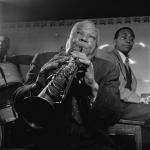
Perhaps the foregoing is a more successful attempt at explaining what can be an elusive concept, particularly to a non-musician. A discerning listener of Dixieland responds to and appreciates the differences in soloists described above, even if only at a subconscious level. Thus, it seemed to me to be worthwhile to take another stab at the topic in the hope that the explanation will hasten some of you along the path to discerning listenerhood.
Original Column
From time to time, I encounter persons who want to say that an integral, if not defining, characteristic of Dixieland jazz is melodic improvisation by soloists rather than improvisation based on the chord pattern of the piece being played. This is a seductive concept for reasons set forth below.
Unfortunately, it is also completely inaccurate. As I will explain, whether or not a Dixieland musician chooses to create a new melody when soloing, he/she must, as a first priority, produce something that fits the chord pattern being played by the rhythm section, particularly the chord instruments (piano, banjo, guitar). Thus, all Dixieland improvising is primarily chord-oriented.
It is true that there are some Dixielanders who improvise melodically. However, it is fallacious to generalize from this minority and expand the notion of melodic improvisation into something inherent in and essential to our music.
First, let’s make sure we know what we mean by “melodic improvisation.” We are not talking about a soloist who chooses to repeat the melody written by the composer, personalizing it via tonal shadings, fills and other decorations.
Doing so is a common convention of the uptown New Orleans Dixieland style and is also adopted by some soloists in other styles. I respect and enjoy this practice, recognizing that it takes great talent to do effectively, but it is not the type of melodic improvisation that I want to discuss today.
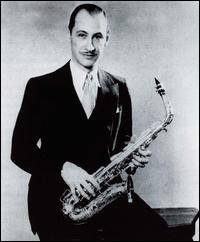
For our purposes here, I mean an improvisation that emerges as a logically constructed new song, a coherent chorus-length singable tune (that fits the basic chord pattern) – such as Frank Trumbauer and Bix Beiderbecke each created on their immortal recording of “Singin’ The Blues (Till My Daddy Comes Home).” Incidentally, the fact that these two solos were learned note for note by hordes of jazzmen over the years ought to provide your first clue that the skill of melodic improvising is much rarer in Dixieland than many works of jazz literature – often highly romanticized – would have you believe.
Why do these romantics embrace the notion of improvising on the melody? There are two main reasons. First, “melody” is a word that carries an emotional charge in addition to its technical meaning. Second, there is some misunderstanding about what is or is not a melody in the first place.
You can see the dichotomy in the dictionary definition of “melody.” From a technical viewpoint, mine accurately enough defines melody as “a rhythmic succession of single notes organized as an aesthetic whole.” However (here comes the emotional charge), an alternate definition is “a sweet or agreeable succession or arrangement of sounds” (emphasis added).
Many people discussing Dixieland run these two notions together when discussing melody. To them, melody has a connection of being pleasing.
Obviously, then, the more of it they can say is in the music they like, the better that music must be. Similarly, if the jazz they like involves melodic improvisation, then it must be more pleasing than jazz which does not and which they don’t like.
It is common for these folks to use this approach as a way of putting down bop and other post-bop jazz forms which, to them, do not have melodies that please. Some of them say that such music has no melody at all.
Actually, modern jazz solos are often much more melodic, as that term is understood musically, than Dixieland solos. Saxophonists and pianists in modern jazz typically spin out lengthy lines that are much more like song melodies than the two-bar and four-bar phrases that comprise the overwhelming bulk of Dixieland solo improvisations.
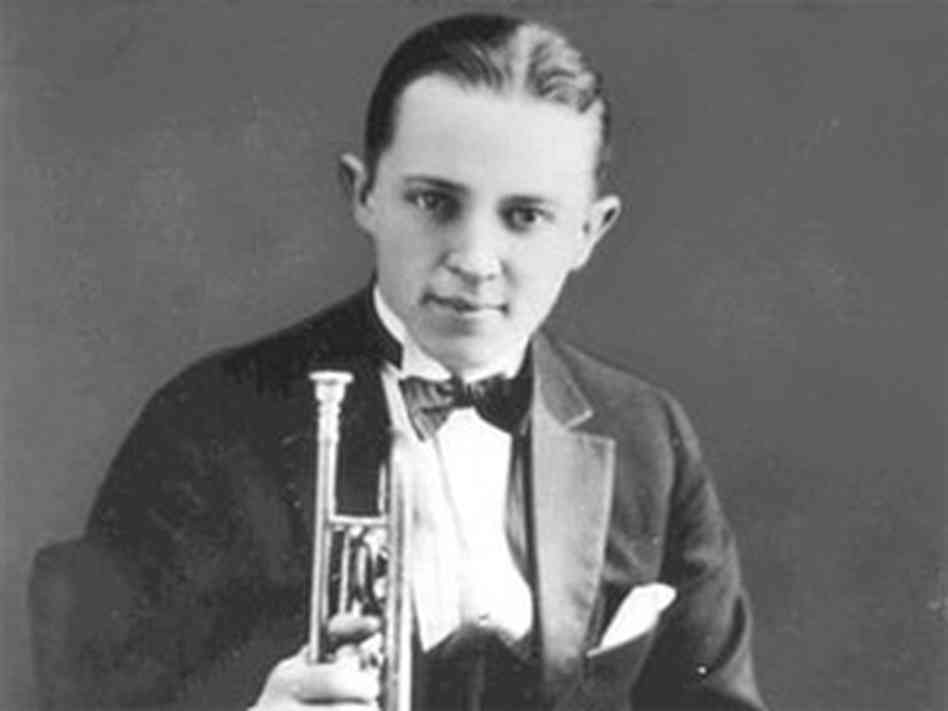
These modern jazz lines are frequently angular, busy, dissonant vs. the harmonic pattern, jagged, and in other respects responsive to conventions of modern jazz that many Dixielanders do not find pleasant. However, whether or not you like such lines, there is much more melody to these ideas than there is, for example, in the two-bar riff that forms the basis for the chorus to the Dixieland evergreen “Royal Garden Blues.”
In fact, modern jazzmen/women are commonly forced to improvise on the melody. The chords used in some modern jazz tunes employ very high harmonics and odd intervals, setting up ambiguous harmony that won’t clash with anything the soloist wants to play. In those cases, he/she has little other than the melody on which to base the improvisation. But I’m getting ahead of my story.
In May 1991, West Coast Rag’s then-publisher Woody Laughnan sent me a copy of the May 5, 1991 IACJF Networker, the newsletter of the International Association Of Classic Jazz Festivals. Woody wanted me to know that a “Texas Shout” column of mine had been reprinted therein.
Reading the rest of the publication, I observed that the group was struggling to define “classic jazz” in order to explain to prospective members the type of music it supported. Two definitions had been offered for the membership’s consideration, including this one: “Classic jazz is that form of jazz wherein improvisation is based upon the melody as opposed to being based upon chordal progressions.”
On May 10, 1991, I sent a letter to Phil Franklin, IACJF’s Chairman, to thank him for reprinting my article and for his kind remarks about it. Not being able to keep my nose out of other people’s musical business, I added some thoughts regarding the suggested definitions.
If memory serves, Phil printed my letter in a subsequent Networker. Anyway, the portion of my remarks therein most pertinent to today’s column reads as follows:
The other definition, one which requires “classic jazz” to have improvisation based on the melody and not on chord progressions, reflects a fundamental misunderstanding of how the music works. Persons who improvise in the older styles of jazz, presumably the “classic” ones, are virtually forced to keep the chord pattern in mind while doing so.
That is because Dixieland jazz typically has rhythm sections with relatively louder instruments playing the chord pattern behind the solo. If the soloist chooses to play out-of-chord notes as a part of a melody line against the rather insistent sound of a tuba or banjo, and if he keeps it up for very long, the solo will start to sound “wrong.” That statement is still true, but to a lesser degree, if his backup is the softer-edged guitar and string bass.
As jazz evolved, less emphasis was placed on the practice of expressly stating the chords. For example, pianists during the thirties were more inclined to play single-note treble figures with occasional part-chord jabs in the bass.

In the more advanced jazz forms, bands may well have no chordal instrument at all. Ornette Coleman made his first big splash with a combo consisting of trumpet, saxophone, bass and drums.
Such instrumentation gives, say, the saxophone soloist maximum freedom to play pure melody, because the trumpet and bass sound only two notes against him. Any combination of three notes will make some kind of chord, so it’s almost impossible in that context for the soloist to hit notes with a “wrong” sound. In fact, some of the “free jazz” that came along in the sixties was played without any sort of advance agreement among the musicians as to key, chords or tempo!
Given that the earlier styles of jazz are those in which the soloists must pay the most attention to the chord pattern, for the above reasons, the suggested definition manages to miss the point in yet another direction. All jazz soloists play with relative degrees of emphasis on melody and rhythm. Rarely does a soloist consistently emphasize those two elements equally.
To name two that quickly come to mind, Sidney Bechet and Bix Beiderbecke were highly melodically-oriented soloists. Their solos always sing to you.
Conversely, Wild Bill Davison (one of my all-time favorites), whose solos sometimes consisted of unique combinations of shrieks, jabs, bent notes and rasps, was a rhythmically-oriented soloist. Some of his solos do not sing to you at all (are practically unsingable, in fact), but instead roll right over top of you with their sheer drive and excitement. A major name on the current scene, who shows more than a little of Bill in his style, is the excellent Ernie Carson, whose solos are often built up of short flurries of unadulterated rhythm based on the chord pattern, bearing essentially no relationship to the original melody.
One could go on. The great tailgater Jim Robinson created a unique solo style out of a handful of licks which he emitted with an irresistible, almost percussive muscularity, while his colleague, pianist Alton Purnell, stuck largely to treble arpeggios and jabs over a propulsive rhythmic base.
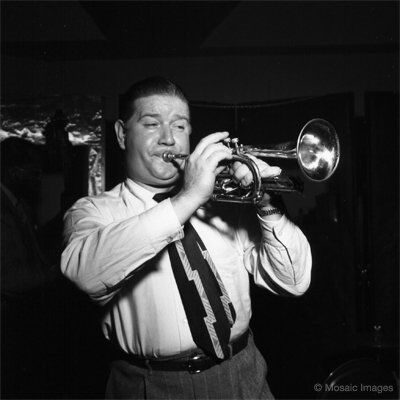
If you define “classic jazz” as jazz where improvisation is based more on melody than chords, you will be saying, whether you realize it or not, that Wild Bill Davison, Jim Robinson, Alton Purnell, Ernie Carson and a host of others, including an overwhelming majority of part-time Dixielanders who make up so many of the bands that play for your members, do not play it. Also, many modern jazzmen will be able to say, quite accurately, that because they improvise melodically, they play “classic jazz.”
That result, I think, is not the one you’re looking for.
Let me close by amplifying the points in my letter with a few observations drawn from thirty years of reviewing recordings in all styles of early jazz, including taking careful notes on every solo played thereon. There is no question that the overwhelming majority of soloists on these records are primarily rhythmically oriented, as were Wild Bill Davison and Jim Robinson, described in the letter quoted above. Their lines tend to be made up of short loosely related phrases (fitted to the underlying chord pattern) that push and pull at the beat while, via tone coloration, also setting up and easing other types of tension.
This result is consistent with the way most jazz artists approach soloing. Few of them go into a solo with a clear idea of how they’re going to start, much less how they’re going to structure the entire outing. Their solos consist in large part of spur-of-the-moment responses to factors impacting them at the time, such as what the accompanists are playing, audience response, the acoustics of the room, etc.
Improvising jazzmen/women are occasionally asserted to be spontaneous composers. Perhaps that statement is true in a strict-construction sense. However, an improviser does not usually “compose” as most people understand the term – consciously creating and polishing a carefully worked out, poised, musical statement.
Thus, melodic improvisation, far from being a sine qua non of early jazz, is actually a rather rare commodity in it. I suspect that this rarity is the reason why especially gifted practitioners of melodic improvisation, such as Bechet and Beiderbecke, are so admired by players and fans alike.
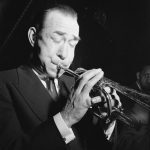
To be sure, highly talented rhythmic soloists, like the wonderful cornetist Muggsy Spanier, are revered by the jazz community and rightly so. However, they are seldom put on as high a pedestal as the melodic improvisers because there are many more of the former than of the latter.
In sum, don’t be misled by a claim that, as a rule, Dixielanders improvise on the melody or are melodic soloists. It sounds good, but it doesn’t square with what you’ll hear from the stages and on the records. Worse, if you’re striving to deepen your appreciation of the idiom, it will head you in the wrong direction.
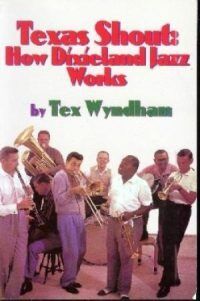 Want to read ahead? Buy the book!
Want to read ahead? Buy the book!
The full run of “Texas Shout” has been collected into a lavishly illustrated trade paperback entitled Texas Shout: How Dixieland Jazz Works. This book is available @ $20.00 plus $2.95 shipping from Tex Wyndham, On request, Tex will autograph the book and add a personalized note (be sure to tell him to whom the note should be addressed).
Tex Wyndham’s 3 CD Guide to Dixieland with music and commentary is available for $20 plus $2.95 shipping. The separate CD, A History of Ragtime: Tex Wyndham Live At Santa Rosa, is available for $13.00 plus $2.00 shipping. On request, Tex will autograph the inner sleeve and add a personalized note (be sure to tell him to whom the note should be addressed).
Send payment to Tex Wyndham, P.O. Box 831, Mendenhall, PA 19357, Phone (610) 388-6330.
Note: All links, pictures, videos or graphics accompanying the Shouts were added at the discretion of the Syncopated Times editorial staff. They did not accompany the original columns and do not necessarily reflect the opinion of Tex Wyndham.
From roughly 1970-2010, Tex Wyndham was: (1) one of the best-known revivalist Dixieland jazz musicians in the US, as cornetist, pianist and bandleader, (2) one of the best-known ragtime pianists in the US, and (3) one of the most respected critics in the US of Dixieland jazz, ragtime, and related music. He is the only person about whom all three of those statements can be made.

